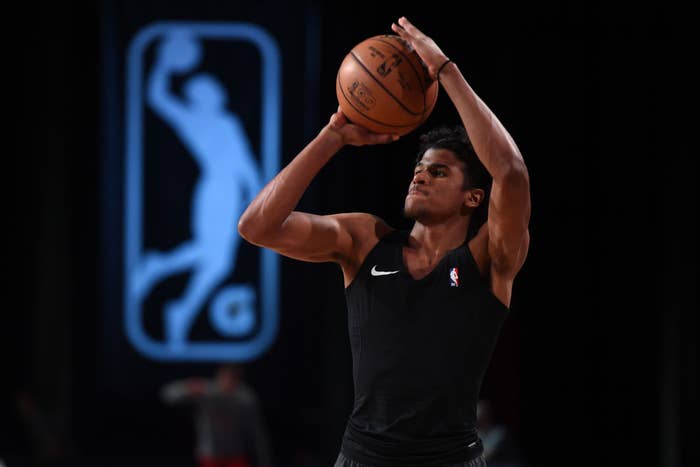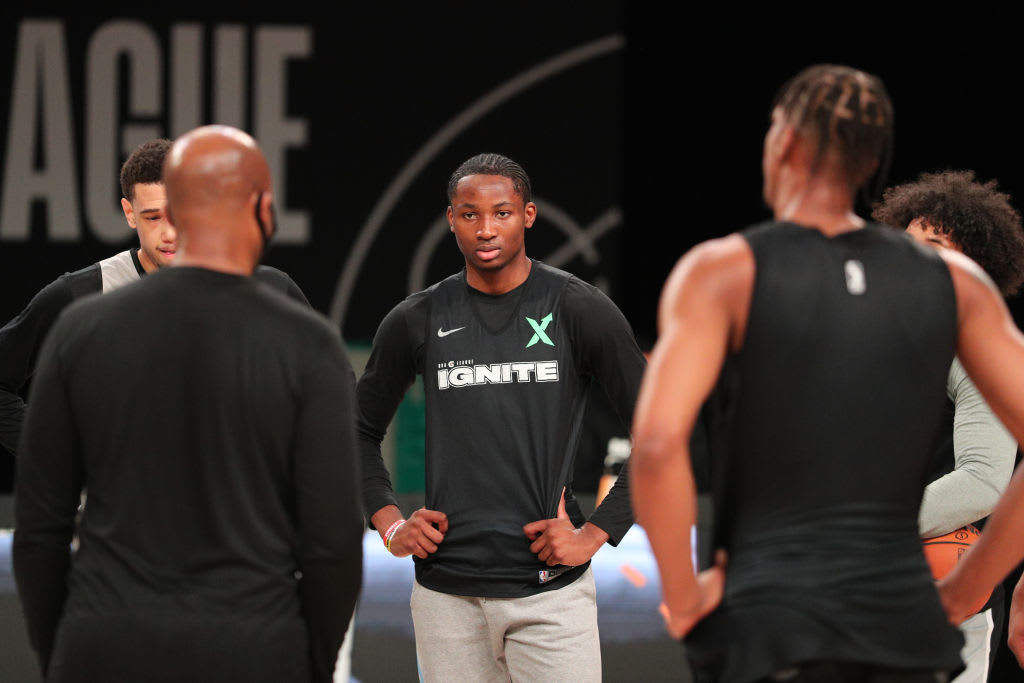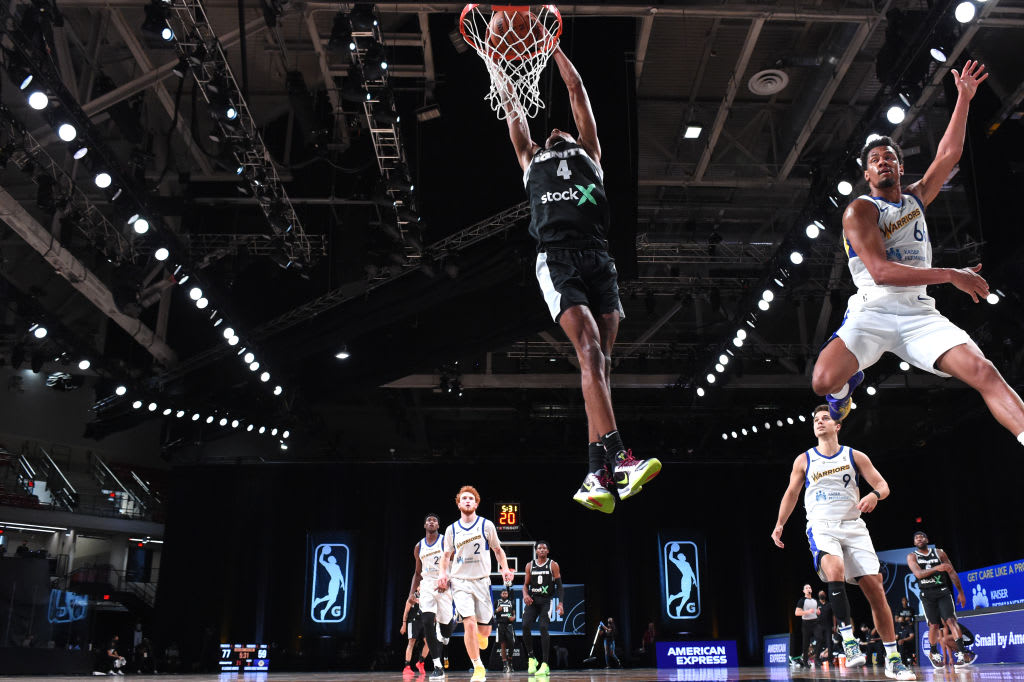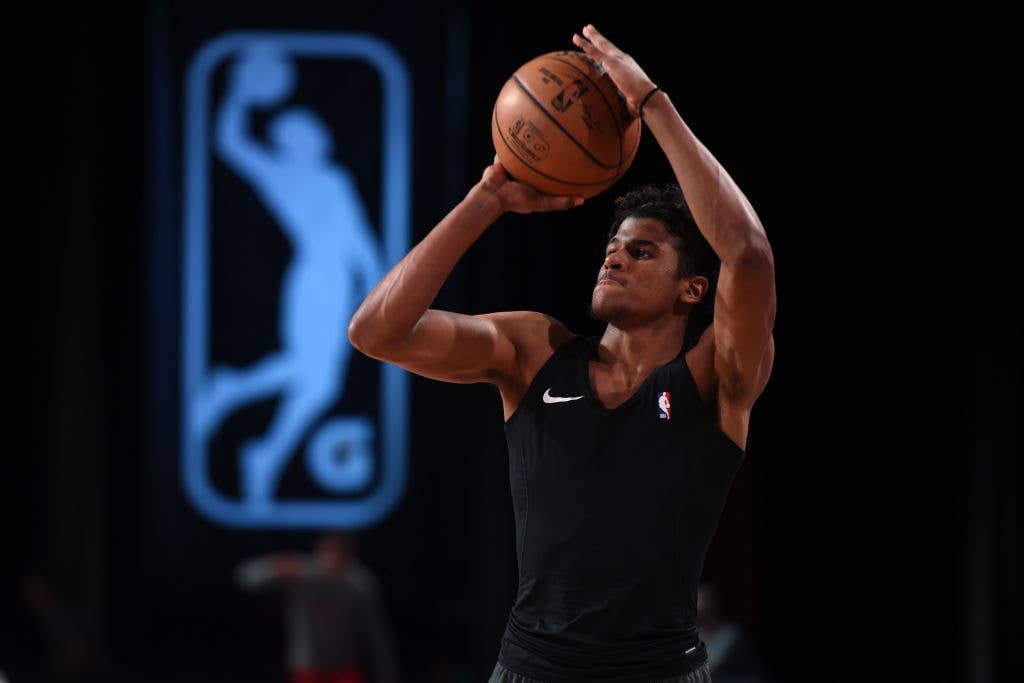
It was early 2019, and newly hired president Shareef Abdur-Rahim was determined to give the stagnating G League a renewed sense of purpose.
He thought the G League, basically the NBA’s version of the minor leagues, could provide something better for the nation’s best pro recruits who wanted nothing to do with the antiquated NCAA system. Talk to enough highly rated high schoolers and you’ll quickly learn every college visit includes the same promise: “We can best prepare you for the NBA.” It is one of the many statements peddled by college coaches and assistants with little supporting data, right up there with, “We have the nation’s best training facilities.” High schoolers often accept it as gospel.
For it to work, Abdur-Rahim needed a face for his ambitious endeavor—offering $125,000 contracts to elite high school prospects to forgo college. He quickly identified two targets.
One was the ultra-hyped LaMelo Ball, whose NCAA eligibility was questionable at best. Ball, currently the favorite to win Rookie of the Year honors with the Hornets, would spend a one-year transition period playing with a professional team overseas before entering the 2020 NBA Draft.
The other was Nuggets rookie RJ Hampton, who had offers from a litany of high-profile college basketball programs but planned on spurning them for the heightened competition of pro ball overseas. Same as Ball.
One of the primary obstacles for Abdur-Rahim in securing the commitments of the young stars was what he called the “inherent conflict” of having players suit up for affiliated teams that don’t possess their NBA rights. Teams and agents alike believed that having high schoolers sign contracts that tethered them to the G League, rather than a specific squad, would create a combustible precedent. It was an issue that had in part doomed the Darius Bazley experiment that preceded Abdur-Rahim’s tenure, in which the former five-star recruit reneged on his agreement to become the first-ever high schooler drafted into the G League. He opted instead for a one-year New Balance internship. Once again, the G League was struggling with legitimacy.
“We kind of back-channeled and shared with people the idea of [Ball and Hampton joining the G League],” says Abdur-Rahim. “But the thing we were constantly trying to explain was how it would work for a player like that who would be playing for a team that is owned by an NBA team that didn’t have rights to them. We were constantly trying to explain that, and get people to feel good about that, and it was just really hard.”
“It’s hard to trust the typical college coach. It’s different when you’re talking to another player that’s played the game before and been around it and seen the ins and outs of the business.” — Isaiah Todd
Unable to make a competitive offer, Abdur-Rahim was forced to watch two of America’s brightest young talents take their skills halfway across the globe, as both Ball and Hampton signed with Australia’s National Basketball League. It was another devastating blow for a league that felt like it couldn’t catch a break. It turned out to be one that Abdur-Rahim cites as a driving force for creating the league’s next revolutionary venture, the G League Ignite.
“We missed there,” says Abdur-Rahim. “But I think what that did was made us go back and hunker down and really outline what you see with this group now.”
Abdur-Rahim hypothesized that the G League would become much more attractive to promising high school prospects if instead of forcing them onto a pre-existing G League team he simply created one for them. He would recruit high schoolers with the promise of a team catered specifically to their goal of reaching the NBA, providing them with ample playing time, veterans meant to offer advice rather than compete for minutes, and an in-depth education on the financial perils that accompany professional basketball. He would call it the G League Ignite.
Signing elite high schoolers was Abdur-Rahim’s primary objective, as he began the team’s formation by reaching out to a large swath of five-star prospects. While Cade Cunningham, Evan Mobley, Jalen Suggs, and a litany of other highly regarded players rejected Abdur-Rahim’s offer, he was able to secure commitments from four other highly touted recruits.
The highest profile of Abdur-Rahim’s agreements belonged to Jalen Green, ESPN’s No. 1 overall player in the 2021 class. He was joined by Jonathan Kuminga, a consensus top 5 recruit who skipped his senior season of high school to become a member of the Ignite’s maiden voyage. The group was rounded out by fellow five-stars Isaiah Todd and Daishen Nix, who decommitted from Michigan and UCLA, respectively, to join the Ignite.
To fill out his roster, Abdur-Rahim sought out NBA veterans who he said understood that the “purpose of the team is to help the young players.” He targeted players like Amir Johnson, the last player to be drafted directly to the NBA out of high school, and Jarrett Jack, offering the opportunity to not only remain connected to professional basketball, but mentor the next group of potential NBA superstars.
Abdur-Rahim’s plan was unlike any team Brian Shaw, the three-time NBA champion and former coach of the Nuggets, had ever heard of. His longtime friend met with him in the spring of 2020 and campaigned for Shaw to make his return to the sidelines as the inaugural coach of the newly formed Ignite. The 14-year NBA veteran was skeptical. But as Abdur-Rahim laid out his vision for what the Ignite could be—a team where development is prioritized over wins and losses and teaching players the NBA salary cap is just as important as their education of pick-and-roll coverages—Shaw became interested. By the time Abdur-Rahim got to which high schoolers Shaw would be coaching, he bought in.

“As I thought about it and I started to look at the guys that they were talking about possibly having on the team, it intrigued me,” says Shaw. “I looked at it as an opportunity to get back to be a head coach, to do some of the things that I’ve done all along anyway—developing young players.”
Those same high schoolers? Not so much.
“When they got here, they weren’t very trusting of anybody,” says Shaw. “They were away from their families, and the pandemic is going on, and then now you’re being introduced to a new coach and a new coaching staff and all these new people around. I’m sure they were in the back of their minds [thinking] ‘What’s our angle, do we have an agenda?’”
Shaw knew that if he was going to gain their trust he would need to make some changes. The tough love coaching style he was accustomed to had failed him in his first head coaching opportunity, contributing greatly to his firing midway through just his second season with the Nuggets. Now tasked with shepherding the G League’s most unique roster, Shaw was forced to reconsider many of his guiding principles and truly examine what it takes to lead young men.
“I knew that I couldn’t be antiquated in my ways, just draw a hard line in the sand and say that this is the way that it is,” says Shaw. “We’re in a different world. Even as close as 2013, when I was the head coach of the Denver Nuggets, I came in basically with a hard-line stance. I drew a line in the sand and said this is the way that I want things to be done—I was pretty old school in my approach—and it’s going to be my way of doing it or not. You can’t really be that way anymore.”
Shaw’s coaching style prioritized compassion and empathy, embracing intimate relationships in a way he hadn’t in previous stops. He has gravitated toward a saying he attributes to the legendary college coach Rick Majerus: “They don’t care how much you know until they know how much you care.” They are words Shaw has taken to heart, seeking out struggling players and working to impart some of his vast knowledge.
“I couldn’t ask for a better coach,” says Ignite power forward Isaiah Todd, a projected first-round pick in this summer’s draft. “He’s done a great job teaching us how to be young men on and off the court. He’s instilled that competitive mindset in us all. He’s always telling stories, he’s been around some great players like Kobe, Shaq, Larry Bird, guys that we idolize. Listening to him talk, some of the things he’s told us it’s just so easy to trust, and he trusts us right back.”
With as many as four Ignite players likely chosen in the 2021 NBA Draft (Green, Kuminga, Todd and Nix), the question is begging to be asked: How long will college basketball remain the top destination for the premier recruits?
“It’s hard to trust the typical college coach,” says Todd. “It’s different when you’re talking to another player that’s played the game before and been around it and seen the ins and outs of the business. When I talked to Shareef, it just felt like I could be safe here and be myself.”
While some Ignite members were attracted to the financial and psychological education the G League could provide off the court, Green was more interested in what they could offer on it. Described by his AAU coach Philippe Doherty as “laser-focused,” Green lights up when talking about basketball’s intricacies and was giddy to learn all of the NBA’s unique verbiage that Shaw taught.

“College, you don’t really learn the terms you’re going to learn in the pros,” Green said. “That’s why I chose the G League, because you’re learning things ahead of the game. You’re one step ahead.”
Green’s accelerated initiation into professional basketball has not been without its obstacles though. The Fresno, California, native is an athletic marvel by any definition of the phrase, yet even he reports struggling to adjust to the intensity of the average G League game.
“The game is very fast and physical,” Green explains. “It’s something you’ve got to adapt to. It’s a whole ’nother level. Everyone’s moving, everyone’s talking, there’s so much energy on the court. If you don’t come with that energy, you’re not going to win.”
The allure of superior competition, Abdur-Rahim believes, will be compelling enough to elevate the Ignite from intriguing alternative to go-to destination for the world’s best young hoopers. With the G League rumored to be an option for both 2021 and 2022’s No. 1 overall prospects, Chet Holmgren and Emoni Bates, respectively, Abdur-Rahim’s hopes may be quickly turning into reality.
“If you’re headed towards the NBA, we believe we have the best experiences to help you develop and grow,” says Abdur-Rahim, a 12-year NBA vet who made the 2002 All-Star team. “If you want the opportunity to play against the best young players in the world, we want to grow this to the point where that’s what this is.”
Despite Ignite’s season coming to a close Monday following their 127-102 defeat to the top-seeded Raptors 905 in the first-round of the G League playoffs, their campaign was unquestionably a success. Green and Kuminga solidified themselves as top 10 prospects in the upcoming draft, while Todd and Nix enjoyed the unbridled playing time and guidance their college choices likely could not have matched.
Todd specifically improved his draft stock, compiling a highlight reel chock-full of NBA caliber plays, including a buzzer-beating fall-away jumper. He avoided playing for a loaded Michigan team where opportunities would’ve been scarce. As he progresses to the next stage of his NBA journey, Todd is reveling in the success of his decision, knowing his status as G League pioneer will survive long past his tenure with the Ignite.
“I wanted to challenge myself to play against some of the best players to come out of college and some guys who played in the league,” says Todd. “Just to have that taste of what it feels like to be a professional basketball player in America, and do it while doing something that nobody has done before. That’s what makes it feel like we’re doing something special.”

